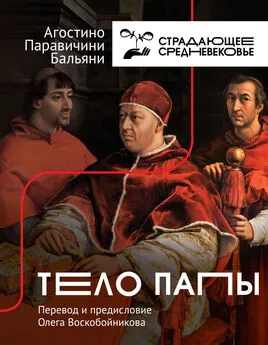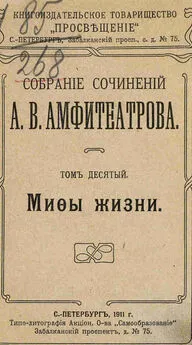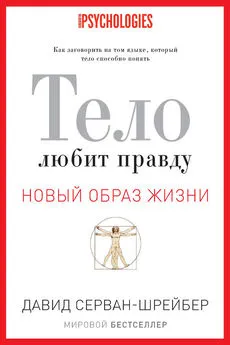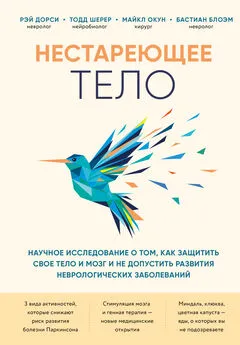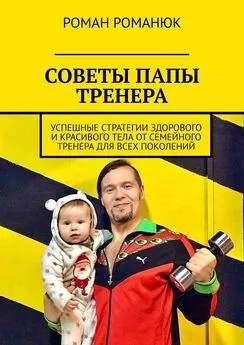Агостино Паравичини Бальяни - Тело Папы
- Название:Тело Папы
- Автор:
- Жанр:
- Издательство:Литагент АСТ
- Год:2021
- Город:Москва
- ISBN:978-5-17-127223-4
- Рейтинг:
- Избранное:Добавить в избранное
-
Отзывы:
-
Ваша оценка:
Агостино Паравичини Бальяни - Тело Папы краткое содержание
В основе книги – рассуждения автора о сущности власти, о божественном и природном в человеке. Мир римских пап с мечтами о долголетии и страхом смерти, спорами о хрупкости тела и бессмертии души предстает перед нами во всем его многообразии.
Перевод книги на русский язык выполнил российский медиевист, доктор исторических наук, специалист по культуре средневекового Запада Олег Воскобойников.
В формате PDF A4 сохранен издательский макет.
Тело Папы - читать онлайн бесплатно ознакомительный отрывок
Интервал:
Закладка:
Dykmans M. Le cérémonial de Nicolas V // Revue d’histoire ecclésiastique. Vol. 63. 1968. P. 365–825.
Dykmans M. Les pouvoirs des cardinaux pendant la vacance du Saint Siège d’après un nouveau manuscrit de Jacques Stefaneschi // Archivio della Società Romana di storia patria. Vol. 104. 1981. P. 119–145.
Dykmans M. Paris de Grassi // Ephemerides liturgicae. Vol. 96. 1982. P. 407–482.
Dykmans M. L’oeuvre de Patrizi Piccolomini ou le cérémonial papal de la première Renaissance. 2 vv. Città del Vaticano, 1980–1982.
Dykmans M. Le cérémonial papal de la fin du Moyen Âge à la Renaissance. 4 vv. Bruxelles, R., 1977–1985.
Easton S.C. Roger Bacon y and His Search for a Universal Science. A Reconsideration of the Life and Work of Roger Bacon in the Light of His Own Stated Purposes. New York, 1952.
Ebers G.J. Devolutionsrecht vornehmlich nach katholischem Kirchenrecht. Stuttgart, 1906.
Ehrle F. Der Nachlass Clemens V. und der in Betreff desselben von Johann XXII. (1318–1321) geführte Process // Archiv für Litteratur— und Kirchengeschichte des Mittelalter. Bd. 5. 1889. S. 1–158.
Eichmann E. Die Kaiserkrönung im Abendland. 2 Bde. Würzburg, 1942.
Eichmann E. Weihe und Krönung des Papstes im Mittelalter. München, 1951.
Eisenberg R. Das Spolienrecht am Nachlass der Geistlichen in seiner geschichtlichen Entwicklung in Deutschland bis Friedrich II. Marburg, 1896.
Elze R. ‘Sic transit gloria mundi‘: la morte del papa nel medioevo // Annali dell’Istituto storico italo – germanico in Trento. 1977. № 3. P. 23–41. Немецкий вариант: ‘Sic transit gloria mundi‘. Zum Tode des Papstes im Mittelalter // Deutsches Archiv für Erforschung des Mittelalters. 1978. № 34. S. 1–18.
Engels O. Kardinal Boso als Geschichtsschreiber // Konzil und Papst. Historische Beiträge zur Frage der höchsten Gewalt in der Kirche. Festgabe für H. Tüchle / ed. G. Schwaiger. München, 1975. S. 147–168.
Erdmann C. Kaiserliche und päpstliche Fahnen im hohen Mittelalter // Quellen und Forschungen aus italienischen Archiven und Bibliotheken. Bd. 25. 1933–1934. S. 1–48.
Erlande – Brandenburg A. Le roi est mort. Etude sur les funérailles, les sépultures et les tombeaux des rois de France jusqu’à la fin du XIII esiècle. Genève, Paris, 1975.
Finke H. Eine Papstchronik des XV. Jahrhunderts // Römische Quartalschrift. Bd. 4. 1890. S. 340–362.
Finke H. Aus den Tagen Bonifaz VIII. Funde und Forschungen. Münster, 1902.
Forcella V. Iscrizioni delle chiese e di altri edifici di Roma dal secolo XI fino ai giorni nostri. 14 vv. R., 1869–1884.
Forchielli G. Il diritto di spoglio e il diritto di regalia in Germania nel medioevo // Für Kirche und Recht. Feschtschrift für J. Heckel / hg. S. Grundmann. Köln, 1959. S. 13–55.
Förster E. Roger Bacon’s ‘De retardandis senectutis accidentibus et de sensibus conservandis’ und Arnald von Villanova’s: “De conservanda iuventute et retardanda senectute”. Diss. Leipzig, 1912.
Förster R. De Aristotelis quae feruntur Secretis secretorum commentatio / ed. R. Foersterus. Kiel, 1888.
Freistedt E. Altchristiliche Totengedächtnisstage und ihre Beziehung zum Jenseitsglauben und Totenkultur der Antike. Münster, 1971.
Frutaz A.M. La famiglia pontificia in un documento dell’inizio del sec. XIV // Palaeographica Diplomatica et Archivistica. Studi in onore di Giulio Battelli. Vol. II. R., 1979. P. 277–323.
Fuhrmann H. ‘Il vero imperatore è il papa’. Il potere temporale nel medioevo // Bullettino dell’Istituto storico italiano e Archivio Muratoriano. Vol. 92. 1985/86. P. 367–379.
Fuhrmann H. Über die Heiligkeit des Papstes // Jahrbuch der Akademie der Wissenschaften in Göttingen. 1981. S. 28–43.
Galbreath D.L. Papal Heraldry. Cambridge, 1930.
Gale F.M. Whether it is Possible to Prolong Man’s Life Through the Use of Medicine // Journal of the History of Medicine. Vol. 26. 1971. P. 391–397.
Gandolfo F. Reimpiego di sculture antiche nei troni papali del XII secolo // Rendiconti della Pontificia Accademia Romana di Archeologia. Serie III. Vol. 47. 1974–1975. P. 203–207.
Gardner J. Arnolfo di Cambio ad Roman Tomb Design // Burlington Magazine. Vol. 115. 1973. P. 420–439.
Gardner J. Boniface VIII as a Patron of sculpture // Roma anno 1300. R., 1983. P. 513–520.
Gardner J. Patterns of Papal Patronage circa 1260–circa 1300 // The Religious Roles of the Papacy: Ideals and Realities, 1150–1300 / ed. Chr. Ryan. Toronto, 1989. P. 439–456.
Gardner J. Some Cardinal’s Seals of the Thirteenth Century // The Journal of the Warburg and Courtauld Institutes. Vol. 38. 1975. P. 72–96.
Gardner J. The Tomb and the Tiara. Curial Tomb Sculpture in Rome and Avignon in the Later Middle Âges. Oxford, 1992.
Garms J. Gräber von Heiligen und Seiligen // Skulptur und Grabmal des Spätmittelalters in Rom und Italien. Wien, 1990. S. 83–105.
Gay V., Stein H. Embaumement // Glossaire archéologique du Moyen Âge et de la Renaissance. P., 1887–1928.
Gerberto. Scienza, storia e mito. Bobbio, 1985.
Getz F. To Prolong Life and to Promote Health: Baconian Alchemy and Pharmacy in the English Learned Tradition // Health, Disease and Healing in Medical Culture / ed. S. Campbell, B. Hall, D. Klausner. New York, 1992. P. 140–151.
Gieben S. Robert Grosseteste at the Papal Curia, Lyons 1250. Edition of the Documents // Collectanea Franciscana. Vol. 41. 1971. P. 340–393.
Giesey R.E. Le roi ne meurt jamais: Les obsèques dans la France de la Renaissance. P., 1987.
Gillmann F. Die Dekretglossen des Cod. Stuttgart hist. f. 419 // Archiv für katholisches Kirchenrecht. Bd. 107. 1927. S. 192–250.
Gillmann F. Romanus pontifex iura omnia in scrinio pectoris sui censetur habere (c. 1 in VIto de Const. I, 2) // Archiv für katholisches Kirchenrecht. Bd. 92. 1912. S. 1–17.
Gillmann F. Romanus pontifex iura omnia in scrinio pectoris sui censetur habere (c. 1 in VIto de Const. I, 2) // Archiv für katholisches Kirchenrecht. Bd. 106. 1926. S. 156–174.
Ginzburg C. Saccheggi rituali. Premesse a una ricerca in corso // Quaderni storici. Vol. 22. 1987. P. 615–636.
Ginzurg C. High and low. The theme of forbidden knowledge in the XVI thand XVII thcenturies // Past and present. Vol. 73. 1976. P. 28–41.
Glass D. Papal Patronage in the Early Twelfth Century. Notes on the Iconography of Cosmatesque Pavement // The Journal of the Warburg and Courtauld Institutes. Vol. 32. 1969. P. 386–390.
Gnoli D. La Roma di Leon X. Quadri e studi originali annotati e pubblicati. Milano, 1938.
Godefroy Th. Le cérémonial français. 2 vv. P., 1649.
Göller E. Die päpstliche Pönitentiarie. 2 vv. R., 1907–1911.
Göring H. Die Beamten der Kurie unter Bonifaz VIII. Königsberg, 1934.
Graf A. Miti, leggende e superstizioni del Medio Evo. 2 vv. Torino, 1892–1893.
Grauert H. Meister Johann von Toledo // Sizungsberichte der bayerischen Akademie der Wissenschaften. 1901. S. 111–325.
Grauert H. Magister Heinrich der Poet von Würzburg, und die römische Kurie. München, 1912.
Gregorovius F. Die Grabdenkmäler der Päpste. Leipzig, 1911.
Grignaschi M. La diffusion du ‘Secretum secretorum’ (Sirr – al—’Asrar) dans l’Europe occidentale // Archives d’histoire doctrinale et littéraire du Moyen Âge. Année 47. 1980. P. 7–70.
Grmek M.D. Le concept d’infection dans l’Antiquité et au Moyen Âge, les anciennes mesures sociales contre les maladies contagieuses et la fondation de la première quarantaine à Dubrovnik (1377) // Radovi sa Medunarodnog simpozii a u povodu sestote oblj etnice Dubrovacke karantene. Zagreb, 1980. S. 9–54.
Grmek M.D. On Ageing and old Age. Basic Problems and Historic Aspects of Gerontology and Geriatrics. Den Haag, 1958.
Gruman G.J. A History of Ideas about the Prolongation of Life. The Evolution of Prolongevity Hypotheses to 1800 // Transactions of the American Philosophical Society. New Series. Vol. 56/9. 1966. P. 1–102.
Guidi P. La coronazione d’Innocenzo VI // Papsttum und Kaisertum. München, 1926. S. 571–590.
Gutmann F. Die Wahlanzeigen der Päpste bis zum Ende der avignonesischen Zeit. Marburg, 1931.
Guyotjeannin O. ‘Episcopus et comes’. Affirmation et déclin de la seigneurie épiscopale au nord du royaume de France (Beauvais – Noyon, X e—début XIII esiècle). Genève, 1987.
Hall Th.S. Life, Death and the Radical Moisture. A Study of Thematic Pattern in Medieval Medical Theory // Clio Medica. Vol. 6. 1971. P. 3–11.
Haller J. Zwei Aufzeichnungen über die Beamten der Curie // Quellen und Forschungen aus italienischen Bibliotheken und Archiven. 1898. № 1. S. 1–31.
Haput G. Die Farbensymbolik in der sakralen Kunst des abendländischen Mittelalters, Diss. Dresden, 1941.
Haskins Ch.H. Latin Literature under Frederick II // Speculum. Vol. 3. 1928. P. 129–151.
Haskins Ch.H. Studies in the History of Mediaeval Science. Cambridge, 1924.
Heller E. Der kuriale Geschäftsgang in den Briefen des Thomas von Capua // Archiv für Urkundenforschung. Bd. 13. 1935. S. 198–318.
Herde P. Die Entwicklung der Papstwahl im dreizehnten Jahrhundert // Österreichisches Archiv für Kirchenrecht. Bd. 32. 1981. S. 11–41.
Herde P. Election and Abdication of the pope: Practice and Doctrine in the Thirteenth Century // Proceedings of the Sixth International Congress of Medieval Canon Law / ed. S. Kuttner, K. Pennington. Città del Vaticano, 1985. P. 411–436.
Herde P. Célestin V. 1294 (Peter vom Morrone). Der Engelpapst. Stuttgart, 1981.
Herklotz I. Der Campus Lateranensis im Mittelalter // Römisches Jahrbuch für Kunstgeschichte. Bd. 22. 1985. S. 1–43.
Herklotz I. Der mittelalterliche Fassadenportikus der Lateranbasilika und seine Mosaike. Kunst und Propaganda am Ende des 12 Jahrhunderts // Römisches Jahrbuch für Kunstgeschichte. Bd. 25. 1989. S. 27–95.
Herklotz I. Die Beratungsräume Calixtus’ II. im Lateranpalast und ihre Fresken, Kunst und Propaganda am Ende des Investiturstreits // Zeitschrift für Kunstgeschichte. Bd. 52. 1989. S. 145–214.
Herklotz I. Grabmalstiftungen und städtische Öffentlichkeit im spätmittelaterlichen Italien // Materielle Kultur und religiöse Stiftung im Spätmittelalter. Wien, 1990. S. 233–271.
Herklotz I. Paris de Grassis Tractatus de funeribus et exequiis und die Bestattungsfeiern von Päpsten und Kardinälen in Spätmittelalter und Renaissance // Skulptur und Grabmal des Spätmittelalters in Rom und Italien. Wien, 1990. S. 217–248.
Herklotz I. ‘Sepulcra’ e ‘monumenta’ del Medioevo. R., 1985.
Hermann A. Farbe // Reallexikon für Antike und Christentum. Bd. VII. Stuttgart, 1969. S. 358–447.
Heusch L. de. The Sacrificial Body of the King // Fragments for a History of the Human Body / ed. M. Feher. Vol. III. New York, 1989. P. 387–394.
Heusch L. de. Écrits sur la royauté sacrée. Bruxelles, 1987.
Hofmann K. Der ‘Dictatus Papae’ Gregors VII. Paderborn, 1933.
Hohl E. Die angebliche Doppelbestattung des Antoninus Pius // Klio. Bd. 31. 1938. S. 169–185.
Holtzmann W. Wilhelm von Nogaret. Rat und Großsiegelbewahrer Philipps des Schönen von Frankreich. Freiburg in Breisgau, 1898.
Hugenholtz F.W.N. The Anagni Frescoes: a Manifesto. A historical investigation // Mededelingen van het Nederlands Instituut te Rome. 1979. P. 139–172.
Iazeolla T. Il monumento funebre di Adriano V in S. Francesco alla Rocca a Viterbo // Skulptur und Grabmal des Spätmittelalters in Rom und Italien. Wien, 1990. P. 143–152.
Imkamp W. Das Kirchenbild Innocenz’ III. (1198–1216). Stuttgart, 1983.
Читать дальшеИнтервал:
Закладка:
